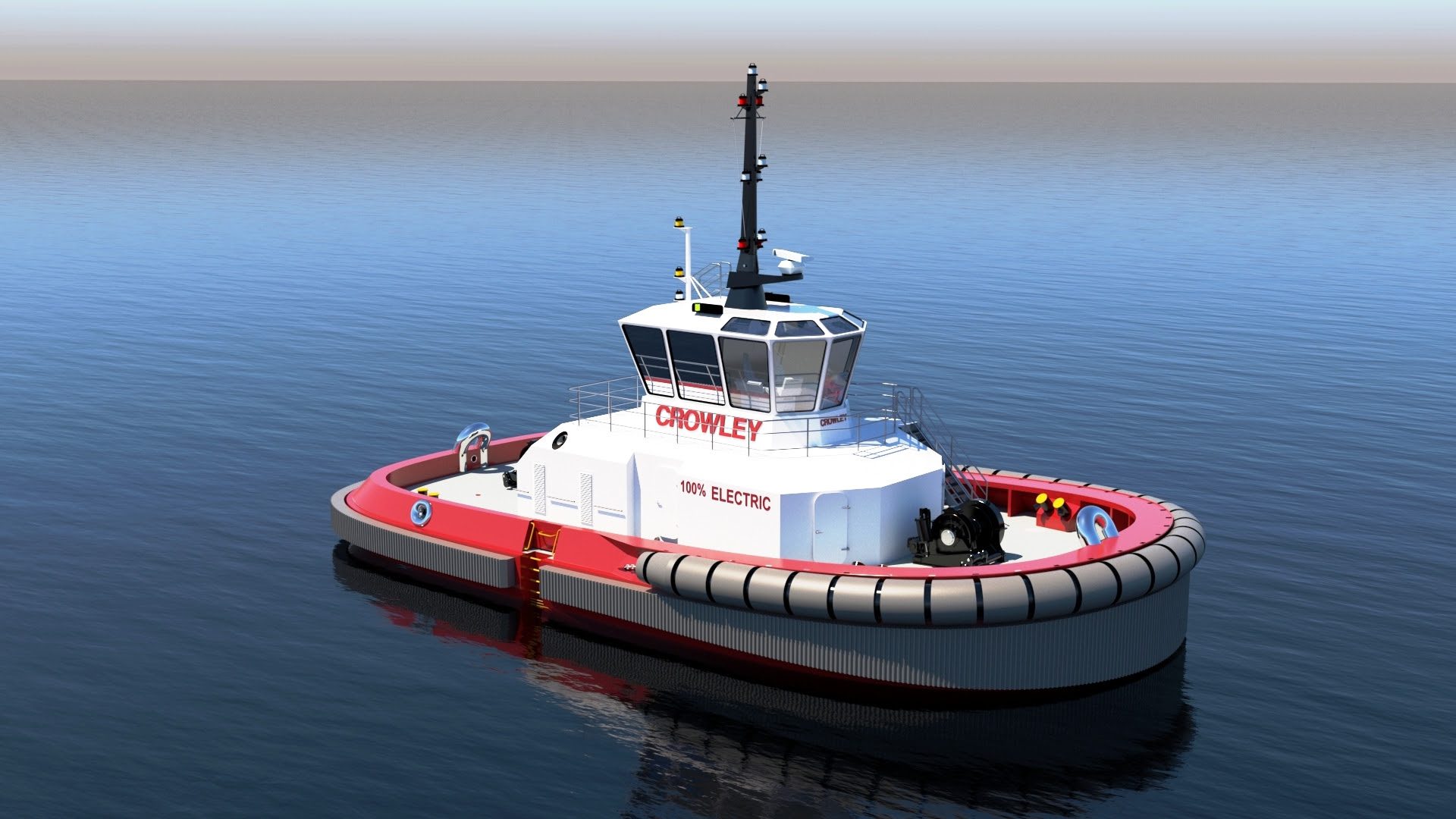HD Hyundai Secures First U.S. Navy MRO Contract
HD Hyundai Heavy Industries Co. has secured a maintenance, repair and overhaul (MRO) contract for the USNS Alan Shepard, a 41,000-ton Lewis and Clark-class dry cargo vessel operated by Military...

Crowley Engineering Services has released the design details for the first fully-electric tugboat with autonomous capability for the U.S. market.
Crowley is promoting the design as a sustainable and high-performing solution for ship assist and harbor services in any port. It leverages a large battery system and power saving technology enabling a fully-electric mode of operation while producing zero air emissions or greenhouse gases. The 82-foot tug will provide 70 short tons of bollard pull, with an Azimuthing drive propulsion system with two 1,800 kW motors and a 6 MWh battery.
Crowley Engineering Services is one of four business units of Jacksonville, Florida-based Crowley Maritime Corporation. The design was developed using in-house expertise from recently integrated Jensen Maritime, a former Crowley subsidiary which was integrated into the Crowley Engineering Services unit earlier this year.
Crowley says the design also supports fully customizable features to meet the vessel design requirements with the future in mind. If desired, the platform design can be adjusted for alternate power capacities suitable for a standard hybrid framework. The fully modular batteries allow for upgrades as technology changes. Crowley has also developed an onshore charging station to fully support charging and reliable performance at the home port.
“Crowley’s design provides operators the tugboat solution to continue serving ships quickly and powerfully, while reducing their environmental impact by eliminating a carbon footprint,” said Ray Martus, vice president, Crowley Engineering Services. “This new design sets the standard for innovation by showing that sustainability and power can work together seamlessly in our maritime industries.”
With no exhaust stack, the tug has 360 degrees of visibility from the pilot’s station, allowing the operator to see without obstruction. The tug is also designed for future autonomous operation to increase the safety and efficiency of the operation including integrated automation and control systems. “The intelligent maneuvering and control system offers more efficient vessel operations and allows masters to focus holistically on the overall control and positioning of the vessel in increasingly busy harbors,” Crowley says.
More on the design is below:

Sign up for gCaptain’s newsletter and never miss an update

Subscribe to gCaptain Daily and stay informed with the latest global maritime and offshore news


Stay informed with the latest maritime and offshore news, delivered daily straight to your inbox
Essential news coupled with the finest maritime content sourced from across the globe.
Sign Up